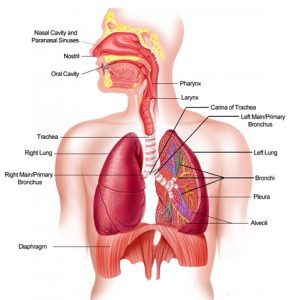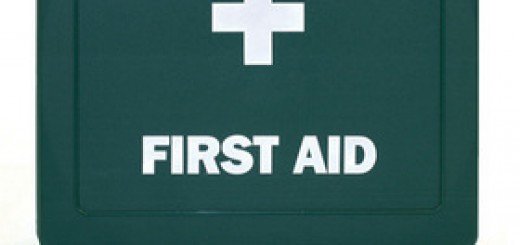How do we breath? A guide to the respiratory system
The respiratory system is made up of the nose, pharynx (throat), larynx (voice box), trachea (windpipe), bronchi (air passages) and alveoli.
The lungs are protected by the rib cage. Normal respiration depends on the movement of the rib cage which moves up and out on inspiration and down and in on expiration. The movement of the rib cage is brought about by the contraction and relaxation of the internal and external intercostal muscles.
When the intercostal muscles contract the rib cage moves up and out (inspiration). When the intercostal muscles relax, the rib cage moves down and in (expiration). During exercise or respiratory distress other muscles can be involved, these are called the accessory muscles.
The two lungs are connected and adhered to the rib cage by a layer of fibrous tissue called the pleural membrane. This has two layers and these must be intact for normal breathing to occur. The outer parietal pleura forms a protective cover for the lungs and is adhered to the rib cage. The inner visceral pleura layer forms a smooth coating and is adhered to the alveoli. Between the two layers is a thin space called the pleural space and this contains a thin film of fluid called pleural fluid that minimises friction and helps smooth movement of the lungs.
When the rib cage moves up and out the lungs are also pulled up and out and when this happens, air is sucked into the lungs. When the ribs move down and in, so do the lungs and air flows out of the lungs.
The movement of the diaphragm also determines movement of the lungs. The diaphragm is a dome shaped tough skeletal muscle that divides the thoracic cavity from the abdominal cavity. The diaphragm has its own nerve supply called the vagus nerve. When the diaphragm contracts, the lungs are pulled down and this helps to open the alveoli and increase air entry. When the diaphragm relaxes, the lungs are pushed up slightly and this increases the movement of air out of the alveoli.
Each lung is divided into lobes, fissures and lobules. The right lung has three lobes, the left lung two. Each lung has one bronchus (large air passage) that subdivides into smaller passageways (secondary bronchi) and smaller passages (tertiary bronchi) until they form tiny bronchioles that terminate in an alveoli. There are about 25 passage divisions between the trachea and the alveoli.
When the lungs are pulled up and out by the movement of the rib cage, the alveoli are pulled open and become larger so air can enter freely. When the rib cage relaxes, so do the lungs and the alveoli become smaller and air flows out. This opening and closing of the alveoli is very like the action of a bellows. When the bellows are big, air is sucked in. When the bellows are small, air is pushed out.
The alveoli function as a tiny air sac that permits the movement of oxygen into the blood and the movement of carbon dioxide out of the blood. Each of the alveoli in each lung has its own blood supply from the pulmonary capillaries. As air enters the alveoli, the oxygen level is high (21%) and it flows across the alveolar wall into the capillary blood stream. In the blood the carbon dioxide level is high and it flows from the blood into the alveoli. In this way there is a ‘gas exchange’ that permits valuable oxygen to enter the body and toxic carbon dioxide to leave.






